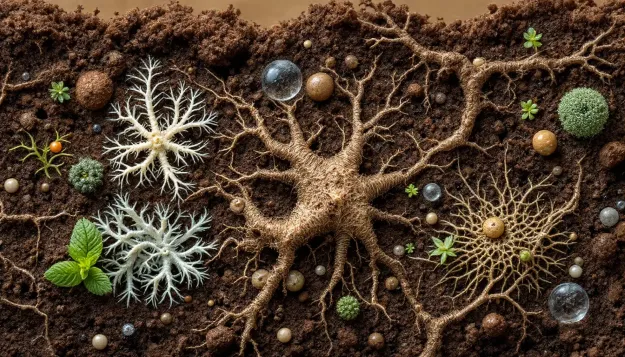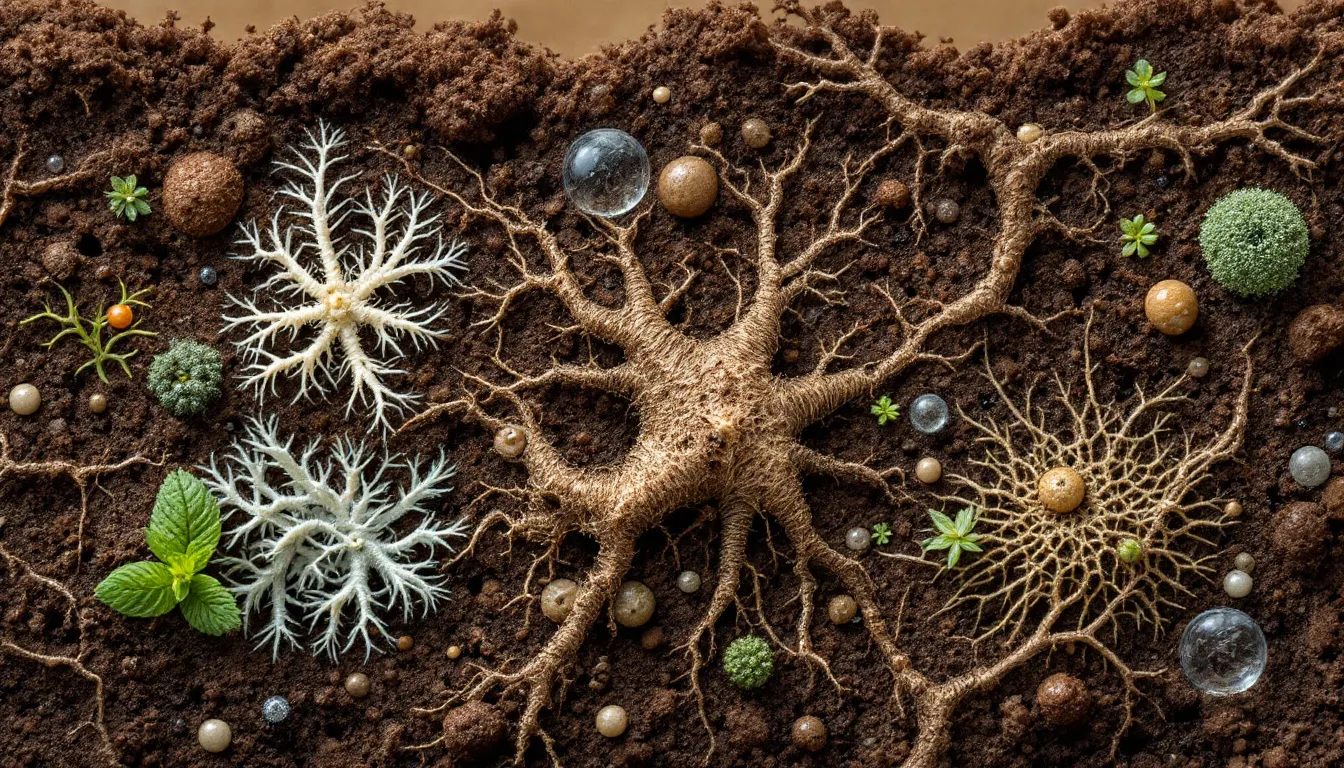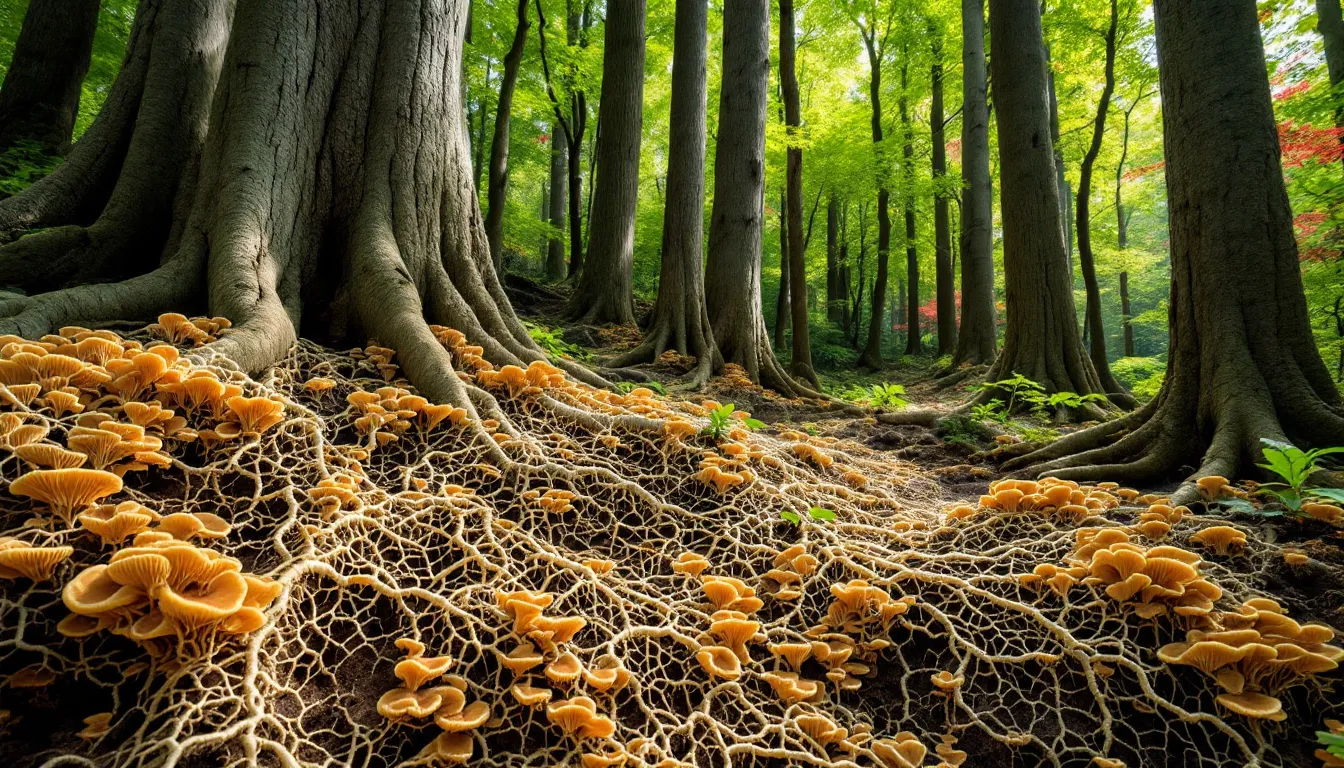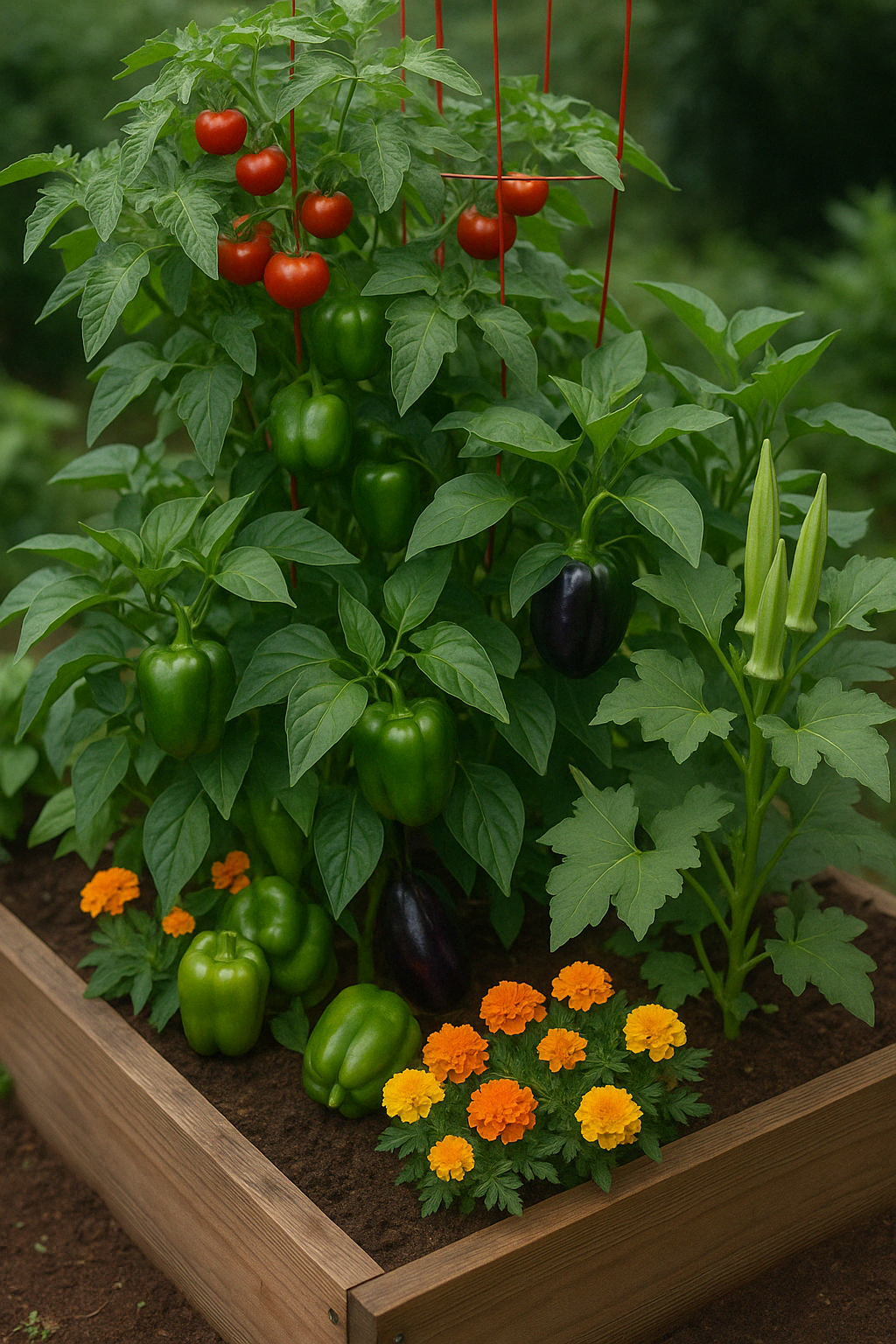
The Science of Soil Health
The Science of Soil Health

Introduction to Soil Microbes
Not long ago, the nitrogen-fixing bacterium Rhizobium was the only soil microbe believed to have a symbiotic relationship with plants. These soil bacteria formed nodules on the roots of members of the pea family and fixed nitrogen, making the nitrogen in the air available to plants.
Now, it is known that the soil is teeming with microorganisms, and many of them help plants access soil nutrients and resist drought, disease, and pests. Just one teaspoon of soil can have thousands of species of microorganisms and billions of individual organisms. The science of soil microbes is quite complex. Understanding the relationship between beneficial soil microbes and plant roots will help ensure your garden is healthy.
These soil microbes perform many vital functions:
Bacteria make nutrients more available, break down organic matter to release its components so they can be absorbed by growing plants, and metabolize minerals so they are available to plants.
Actinomycetes, which are technically classed as bacteria but have many characteristics of fungi, produce antibiotics that can protect plants and humans from disease.
Fungi also break down organic matter, provide nutrients for plants, and protect them by destroying harmful organisms, both other fungi and things like protists and nematodes that might prey on the plant.
Other soil microorganisms, like algae and protozoa, also affect plant health.
Although the complex relationships between plants and soil microorganisms are not fully understood, scientists are discovering more and more relationships among plant species and soil microorganisms. We do know that many complex interactions between soil microbes, plant roots, and the environment are crucial for maintaining healthy soil.
Soil Microbiology and Ecosystem

As the science of soil biology develops, we are understanding more and more about the complex relationships in the soil. The soil microbiome comprises diverse microorganisms, including beneficial microbes, pathogens, and other microbes.
Millions of beneficial organisms can be found in soil. Networks of soil fungi provide plants with nutrients and protection from hostile organisms in exchange for nutrients. These fungal networks connect seedling trees with mature trees of the same species and transport nutrients until the roots of the seedlings are well developed. These networks are found in all natural, mature forests.
Bacteria and fungi are necessary to break down organic matter in the soil. This breakdown provides nutrients to plant roots. A rich variety of soil microbes is essential for the complete breakdown and release of nutrients. Aerobic bacteria do this job in soil, while anaerobic bacteria perform the same function in water. Aerobic bacteria need oxygen, anaerobic bacteria don't. Some species can function both aerobically and anaerobically.
Soil ecosystems are complex and influenced by various environmental factors, including climate, soil type, and land use. Microbial populations and diversity are essential for maintaining healthy soil and promoting ecosystem function. Fire, agricultural chemicals, tilling the soil, and other activities can negatively affect the diversity of soil microbes.
Nutrient Cycling and Nitrogen Fixation

Nutrient cycling is the process by which nutrients are converted from one form to another, making them available to plants. Plants need a total of sixteen essential nutrients, three of which they get from the air and thirteen of which they get from the soil. Nitrogen is the soil nutrient that plants need in the largest quantity. The process by which nitrogen is converted from the air into a form that plants can use is called nitrogen fixation, and certain bacteria, such as nitrogen-fixing bacteria, are involved.
Beneficial microbes, such as mycorrhizal fungi, form symbiotic relationships with plant roots, promoting nutrient uptake and plant growth. Soil organic matter is a key component of soil fertility and is influenced by microbial activity and nutrient cycling. Our desert soil has all the nutrients needed for plant growth except nitrogen and organic matter, so it is a simple matter to increase productivity by adding organic fertilizer.
Carbon Use and Sequestration

Soil microbes play a crucial role in carbon use and sequestration. They are responsible for breaking down organic matter and releasing carbon dioxide. As they break down dead plant material, some of the carbon remains behind in the microorganisms, and some is released to the atmosphere to be used by plants.
Soil carbon is an essential component of soil health and is influenced by microbial activity, soil type, and land use. The higher the soil's organic content, the more carbon is held there. Increasing the bacteria in the soil is an essential strategy for mitigating climate change.
Earth system models are being developed to understand the impact of soil microbes on carbon use and sequestration, and to predict the effects of climate change on soil health. As we learn more about soil microbiology, we can develop more effective ways of increasing soil organic matter and reducing carbon dioxide in the atmosphere.
Managing Soil for Plant Health and Climate Change

Soil management practices that mitigate climate change also make plants healthier and more productive. These strategies include promoting soil carbon storage, reducing synthetic fertilizer use, and enhancing microbial activity. Organic gardening is a key strategy for promoting soil health and mitigating climate change, and involves using natural amendments, such as compost and manure.
Gardeners can increase their soil organic matter by reducing tillage and regularly adding compost or manure. Tilling the soil exposes the microorganisms and the organic matter to the air and sunlight, resulting in more of it being lost. At first, untitled soil may seem hard and difficult to work with, but as the organic matter increases, it will become softer and darker.
When your annual vegetables are finished producing or have frozen, cut the above-ground growth and put it in the compost pile. Leaving the roots in the soil puts a supply of organic matter deep in the soil. Generally, when I pull very small weeds, I leave them on the surface of the soil to decompose there or be carried deeper into the soil by ants, worms, or other helpers.
Use compost and mulch to increase soil health and keep the soil cooler as the atmosphere warms. Excessive heat, such as during heat dome events, reduces the beneficial bacteria in the soil and affects the health of many crops. High organic soils, both because they are richer in food sources for the microorganisms and because they hold more moisture, will be less susceptible to these extreme heat events. That is not to say that they are immune to excessive heat or that there will be no microbial effect when heat dome events occur. Still, compost and mulch will keep the root zone cooler than unprotected soil, and plants will typically live through the event if there is enough water.
Conclusion and Future Directions
Soil health is essential for ecosystem function and is influenced by various factors, including soil microbiology, nutrient cycling, and environmental factors.
Soil microbes, including bacteria and fungi, play a crucial role in sustainable soil fertility and are essential for promoting plant growth and ecosystem function.
Future research directions include understanding the impact of climate change on microbial diversity and developing strategies to promote soil resilience and mitigate climate change.
Soil science is a rapidly evolving field, and new technologies and strategies are being developed to promote soil microbes and ecosystem function.
The importance of soil fertility cannot be overstated. Promoting sustainable soil management practices and mitigating climate change requires a concerted effort.
